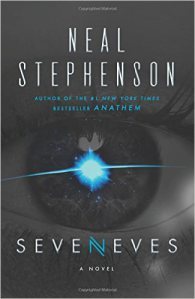Kate Rauner's Blog, page 83
August 1, 2015
#LochNessMonster is a #Catfish
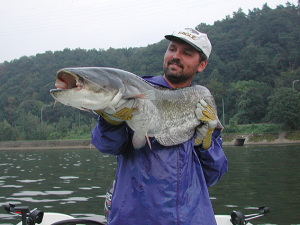
An – apparently – little wels catfish.
After 25 years searching, that’s the conclusion of one serious searcher. Wels catfish were introduced to the UK from the continent for sport fishing in the late 1800s. There’s apparently no proof the catfish were specifically stocked in Loch Ness, but it’s not a far-fetched notion. “What a lot of people have reported seeing would fit in with the description of the catfish with its long curved back.”
The news got picked up by so many outlets that a Google search can barely find anything else, but I did find http://www.lochnessinvestigation.com/catfish.html
A specimen can (rarely) grow 13 feet long, weigh 880 pounds, and survive for over one hundred years. That’s quite a monster, even if it is a catfish.
Quote came from foxnews.com.
It’s almost sad to see a famous monster laid to rest, but in most ways its been laid to rest several times. A sonar search in 2003 found nothing very big – not catfish nor monster.
Before I had a chance to post, I ran across this:
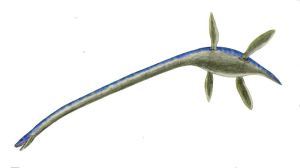
One of the Elasmosaurs
“The newly discovered Elasmosaur has been officially classified as a plesiosaur, and Patrick Druckenmiller, a marine fossil expert from the University Of Alaska Museum Of The North, instructs people to ‘picture the mythical Loch Ness monster’ in order to get a pretty good idea of what the marine creature looked like….
“The unfortunate wording was slightly changed and/or repeated at several other sites… [with] a number of inaccuracies that did not come from Druckenmiller and many clues in phrasing that show the reporter does not know enough to be writing such a story. Druckenmiller states that reporters often mischaracterize quotes, ‘I feel lucky if 70% of truth actually makes it into mainstream media, even when aided with a carefully scripted press release. It’s a fact of life that I’ve come (reluctantly) to accept as inevitable’.”
Don’t expect Nessie to disappear entirely from pop culture.








July 31, 2015
“The #moon blew up without warning and for no apparent reason” #FridayReads
Neal Stephenson offers a suggestion for why the moon broke up, initially into seven pieces, but his novel Seveneves is about the aftermath. It’s really two stories.
The first, about 447 pages in my Epub edition, follows the horrific couple years after the moon blows up and the pieces continue to collide, shatter, and fall to Earth. This first book takes place in our near-future, mentioning Twitter, #hashtags, and Batman. The book provides a tour of the Soyuz spacecraft and the International Space Station – though an expanded ISS with an asteroid attached at one end and a rotating torus section at the other. There are familiar cell phones: As the moon breaks up, people call each other and “a large number of telephones were singing their little electronic songs. Including his. The birth cry of a new age.”
The second story, 232 pages, is about the distant aftermath, 5,000 years in the future, with a new set of characters, technologies, and problems. The book’s title is realized in this story.
This is not a book I could sit down and read straight through, it’s just too long and the descriptions require attention. But, science fiction fans, take it on vacation or a couple long plane trips. Or stage it on your bedside table over the rest of the summer.
972 reviews for the hardcover edition on Amazon, 73% four and five star ratings. NOTE: Any SPOILERS that follow are no worse than what you’ll find on the back of the book and the first few dozen pages of either story.
This epic takes its time, shows us the moon’s explosion through the eyes of five different characters, and offers discussions of orbital dynamics, ham radio, space stations, robotic swarms, etc. – be prepared for mini-seminars, tales of preparing for doomsday, and where and how humanity will survive.
My favorite character is an astronomer who popularizes science. I can’t even recall how Stephenson described him because I’ve got the image of Neil deGrasse Tyson stuck firmly in my mind – I can hear Tyson’s voice as the character explains the coming apocalypse to the US President: trillions of pieces of the rubblizing moon will, in two years’ time, rain annihilation on the Earth. (I went back and looked – I think Stephenson had Tyson in mind, too.)
Stephenson never gets maudlin about the billions of deaths in his story – some people will find that a bit cold.
With the destruction of life on Earth as its driver and familiar characters, the first story (divided into two parts) feels more exciting. The portion set in space can be read independently of the portion set on Earth. The second story builds a new world, and hypothesizing the future a decimated humanity might create is interesting. You could easily read one story or the other by itself, depending on your tastes. Personally, I skimmed quite a few sections. An Ebook edition, where you can search for a name, makes it possible to track the story of a favorite character if you get impatient with Stephenson. If you really get impatient, there’s a plot summary on Wikipedia. The summary won’t hurt your reading experience and may help you decide which parts to read in full, because the point of the book is Stephenson’s broad and deep descriptions. If you can’t get enough of Seveneves, you can buy a Summary and Analysis and unofficial fan sidekicks.








July 29, 2015
Ocean to Sky – a #poem about #Plankton and #Clouds by Kate Rauner
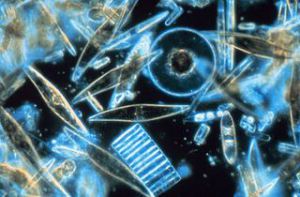
Diatoms through a microscope
From agitation of the waves
Aerosols float skywards,
Originating in the seas
And sending droplets higher.
Particles that form the heart
Of clouds reflecting light,
Pile high into the sky.
But why are so bright?
From space our satellites discover
Clouds, composed in summer
Of tiny droplets from the sea,
That create this wonder.
A happy side effect
Of photons striking molecules,
Sugars built with sunlight
To be each cell’s working fuel.
Tiny creatures manufacture
Amides and triphosphate,
And phytoplankton in the seas
Release a propionate.
Plankton bloom by trillions,
A bubbly scum upon the waves,
That winds can loft with ease
So cooling clouds they gave.
As acid rises in the seas
From airborne C O 2,
The plankton’s bloom will surely fade
‘Neath hotter skies
Than we’re used to.
As explained by csmonitor.com “The clouds over the Southern Ocean reflect significantly more sunlight in the summertime than they would without these huge plankton blooms.” Clouds reflect some of the sun’s heat, affecting climate. Microscopic plankton also “supply half of the planet’s oxygen.” The study is covered in many outlets. You can read more on plankton and photosynthesis, too.








July 25, 2015
#No New #IceAge – Sheesh
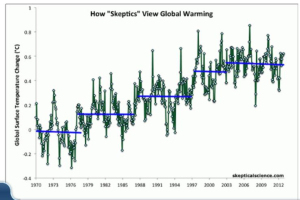
Some people see a series of “hiatuses” in the data, but the temperature keeps going up
A “team of researchers had analyzed the sun’s 11-year cycles from a purely astronomical perspective and found that the solar cycle that will come into force in the 2030s looks much like the one last seen in the mid-17th century, a time period known as the Maunder Minimum, when Europe and North America experienced particularly bitter winters…
“Outlet after outlet echoed a line from the press release that solar activity would ‘fall by 60 percent’.”
Solar activity is NOT solar output, though you’re excused if the popular media gave you that impression.
“A decrease in solar output of 1 percent would be a very big deal for the climate system. A 60 percent decrease would end all life on Earth, forever probably,” says James Renwick, Victoria University of Wellington in New Zealand.
And NO, we’re not all gonna die.
The projected decrease in solar activity would equal a decrease in solar output of roughly 0.1 percent between 2030 and 2050. The rate of rise in overall global temperature might stall over this time, but “once the solar cycle strengthened again, we would be back to greenhouse gas-related warming again.”
If the model pans out, it will be a fine illustration of the effect of solar output on Earth’s climate, but not an the end of global warming. “Over the last 35 years the sun has shown a slight cooling trend. However global temperatures have been increasing. Since the sun and climate are going in opposite directions scientists conclude the sun cannot be the cause of recent global warming.”
Thanks to newsweek.com for debunking the “new ice age” headlines and livescience for provising nuance: “The Little Ice Age may have been more significant in terms of increased variability of the climate, rather than changes in the average climate itself… solar activities can align with changes in temperatures, there are many processes that contribute to climatic variations, and human-induced climate change will likely prove too big a force for muted solar activity to influence.”
For more on global warming, my favorite site is skepticalscience.com. There’s loads of information, a handy list of all the significant arguments against and why they fail to convince, and a handy mouse-over glossary.








July 22, 2015
Ice From Fire – a #Poem by #KateRauner
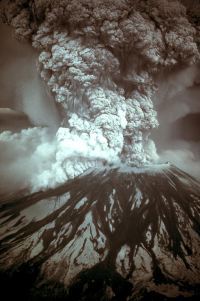
1980 eruption of Mt St Helens, Washington State, USA. Hard to believe a glacier grows in the crater today.
Where pyroclastic flows once blew
And plumes of ash spewed forth,
Crater Glacier’s growing –
While others die, a birth.
Eruptions that have scoured the earth
With slides unprecedented,
Have built a perfect nest for
Glaciers unintended.
Snow fields grew
Til things got weird,
And oozing magma forced a move
Down the slopes it cleared.
Pumice fields are covered now
By willow thickets and scarlet blooms.
A steaming crater is the source
Of flowers on a tomb.
While above, Godzilla’s Hole
Is mapped by cavers brave.
And scientists delight at this –
From death sprouts nature’s nave.
I’ve written quite a few poems about volcanoes. I just published my second volume of poems – Rhyme and Reason Two and discovered that, in 2014, I wrote three poems inspired by volcanoes and volcanoes are mentioned in another. (I don’t plan my poetry, so the muse always surprises me.)
The collection includes one of my most popular poems, Because They’re Big, about modeling super volcanoes. It’s available now on Kindle for 99¢ and should be in most other major on-line retailers in a couple weeks.
I’m working on a paperback edition too, which will include a bonus haiku. Formatting the cover is a pain! But… soon.
Be the first to review my book! And even if someone beats you to it, please leave a review. I love to see what you think, and reviews (posted wherever you hang out) help other readers find me.
Thanks to seattletimes.com for keeping an eye on the mountain.
“On May 18, 1980 a major volcanic eruption occurred at Mount St. Helens, a volcano located in the state of Washington, United States. The eruption… was the only significant one to occur in the contiguous 48 U.S. states since the 1915 eruption of Lassen Peak in California. The eruption was preceded by a two-month series of earthquakes and steam-venting episodes, caused by an injection of magma at shallow depth below the volcano that created a huge bulge and a fracture system on the mountain’s north slope. An earthquake at 8:32:17 a.m… on Sunday, May 18, 1980 caused the entire weakened north face to slide away, creating the largest landslide ever recorded. This suddenly exposed the partly molten, gas- and steam-rich rock in the volcano to lower pressure. The rock responded by exploding a hot mix of lava and pulverized older rock toward Spirit Lake so fast that it overtook the avalanching north face.” wikipedia.org








July 18, 2015
New #Science Inspired #Poetry Collection Available
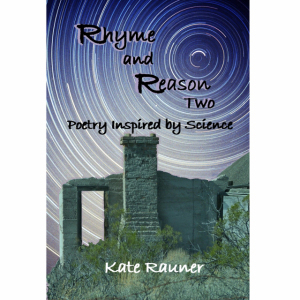 Indie publishing is one of those $#*&^ learning experiences, but I think I’ve got it.
Indie publishing is one of those $#*&^ learning experiences, but I think I’ve got it.
My latest collection of poetry – Rhyme and Reason Two – is available on Amazon. Publishing an ebook there is actually pretty quick and straightforward – there’s a reason Amazon is the Big Dog.
The collection is also available from Smashwords today – they  are also a straightforward place to publish and distribute to all the major on-line retailers, so look in your favorite store in a week or two.
are also a straightforward place to publish and distribute to all the major on-line retailers, so look in your favorite store in a week or two.
BTW, my first volume of poetry is FREE from Smashwords and the major on-line retailers that carry their ebooks,
Paperbacks are a harder undertaking – but, it’s in-work.








#Pluto – Ringleader of the #KuiperBelt
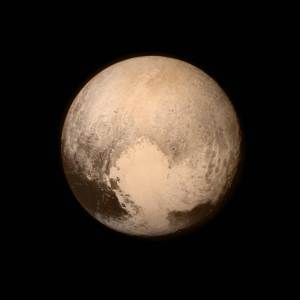
Pluto’s heart shaped feature – NASA
Pluto and Charon – a double system that steals that uniqueness from Earth/Moon. Pluto – orbiting in an ecliptic plane all its own, weird compared to the Sun’s planets. Pluto – largest of the Kuiper Belt objects (that status retrieved from Eris thanks to New Horizons). Pluto – in its own vast ring of millions of objects, the largest known object in the solar system beyond Neptune. Pluto – whose minions have infiltrated closer to the Sun as Neptune’s moon Triton and Saturn‘s Phoebe.
Pluto – no dull, frozen lump. “NASA scientists giddily throwing around words like ‘amazing’ and ‘mind-blowing.’ The pictures appear to upend some of our previous ideas about the presumed dead, dwarf planet. Most notably, it might not be dead.” [cbc.ca]
It’s “geology is ‘astoundingly amazing,’ declaimed Jeffrey Moore, New Horizons co-investigator. He focused on the ‘vast crater-less planes’ he’s also calling ‘not-easy-to-explain terrain’ and ‘icy frozen plains’.” blog.seattlepi.com
Pluto sports “one of the youngest surfaces we’ve ever seen in the solar system.” Some ice peaks are as tall as mountains in the Rockies, and still rising from geological activity not understood. All this, and scientists have only received about 2% of the data New Horizons has collected.
Pluto – who needs to be called a “planet” by bureaucrats on some distant, inner sphere?
BTW 1 – I was also thrilled to discover, once again, that what I know ain’t so. I’ve had in my head that the Sun would appear as merely another bright star from Pluto. No so! “The Sun from Pluto is still pretty dang intense. It would hardly look like just any other star: it would greatly outshine everything else in the sky. Painful to look at, most likely.” badastronomy
BTW 2 – I don’t get personally agitated over calling Pluto a dwarf-planet. Human beings love words to the point of arguing over the abstraction rather than seeing the reality. Are viruses alive? Can an Australopithecus anamensis mother birth an Australopithecus afarensis baby? Is Pluto a planet or a dwarf-planet? These are questions about labels, not about reality.
I’ve quoted a few articles above, but search on “Pluto New Horizons” and you’ll find tons.








July 15, 2015
#Trinity, the First #GroundZero – a #poem by Kate Rauner
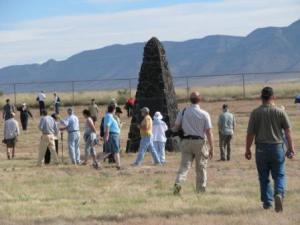
Tourists at Trinity Ground Zero
Two pages away in my atlas
Was the first atomic blast.
Four hundred twenty five miles
And seventy years in the past.
Away from my home in the Gila,
Away from my life, safe and sound,
And sometimes open to tourists,
A place where history’s found.
A stub from the tower’s support leg
The nearby house where they staged
A patch of glassified sand
Preserved from an earlier age.
The trinitite’s been buried
And desert grasses have grown.
Shrubs and thistles have reclaimed
This patch of their ancestral home.
I’ll start my own superstition,
And share it now with my friends.
If I stand just once at ground zero
I’ll never have to again.
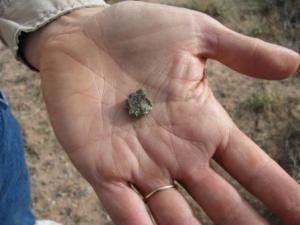
I found a few bits of trinitite at the site, but it’s illegal to remove them. You may buy pieces collected earlier that are now in the hands of collectors.
July 16th is the anniversary of the first atomic bomb blast, an above-ground test in the New Mexico desert code-named Trinity. Much to many people’s surprise, the site is cleaned up and open twice a year to tourists. It’s located on the White Sands Missile Range, an active military base, don’t just turn up unexpected. There’s not much to see, but you can safely visit the first Ground Zero.
I worked for many years in America’s nuclear weapons complex and I’ve held plutonium in my (gloved) hand. Now I’ve also held a bit of the sandy clay soil turned to glass by the explosion at Trinity.
The Bomb led us out of World War II and into the Cold War, which shaped so much of what America did in the world. We escaped further war-time use of The Bomb and I hope that fortune continues.
A friend of mine has written a book about the place we worked – Rocky Flats Plant in Colorado, now demolished and turned into a wildlife habitat – and it’s highly political final days after the Cold War fizzled out. There’s so much bad information out there that I recommend the book to anyone who’s curious about Rocky Flats.








July 11, 2015
Diligence in Non-Fiction Publishing
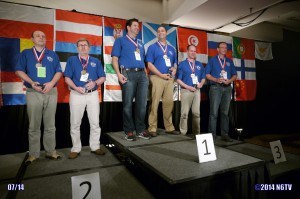
Medal winners at WRTC2014 (N6TV photo)
My husband is part of the amateur radio world – in particular, the elite “contesting” world. He competed in the recent WRTC2014 international contest, which was held in the USA. This event is sufficiently renowned for a traditional publisher to have contracted a book, tentatively titled “Contact Sport”, with author Jim George N3BB(his radio call sign, unique in the world. My husband is N2IC.)
Jim is writing a book about the recent contest and he’s expected to include some controversial stuff. Since he’d like to quote my husband, we’ve been privy to some interesting information. The publisher requires Jim to obtain signed release forms from anyone he will quote, and seems to be avoiding any pictures that might be “damaging” (whatever that means exactly.)
I doubt that famous public figures – presidents and celebrities – are accorded such careful treatment. I am impressed with the publisher’s level of diligence.
I offer this as one more view into traditional publishing.
You may be interested to know that Jim also has a novel out that “probes the relationship, or lack of it, between an emotionally-distant father and his son, who much later in life begins to understand what it means to grow up as the adult child of an alcoholic.”








July 8, 2015
The Problem of #Food – a Poem by Kate Rauner

Chapulines – crickets – right across America’s southern border. These should be an easy sell for Cinco De Mayo.
Seven billion people
With nutrition lacked by half.
Some lack sufficient calories
While others sink in fat.
What can we do?
What can be done?
Do we need a Green
Revolution?
With dignity
We can thrive,
Expanding views
Of who’s in our tribe.
GMOs, not our doom,
Nor, alone, salvation
Fewer kids, better fed,
Can be our decision.
For gentle commerce
To feed us all
We must stop
The ways of war.
Taste buds from the Pleistocene,
Love our modern foods.
Love sweet and salt, and fat,
And things we needn’t chew.
The problem’s vast,
But don’t despair.
Answers are near,
Cause we’re smart,
And we care.
Thanks to nationalgeographic.com for a reminder of this issue – which may be more about distribution and choices than our global ability to grow food.
I like the phrase “gentle commerce.” See my review (as Ponderer) of the book Better Angels of Our Natures, which may provide some small comfort in this age of terrorism. My friend and I also posted on GMOs.
One concept that intrigues me is insects as food. Americans eat some weird looking things (consider crayfish) but we haven’t embraced insects. I read somewhere that food prejudices are the last prejudices we’re proud of – but that may change.









